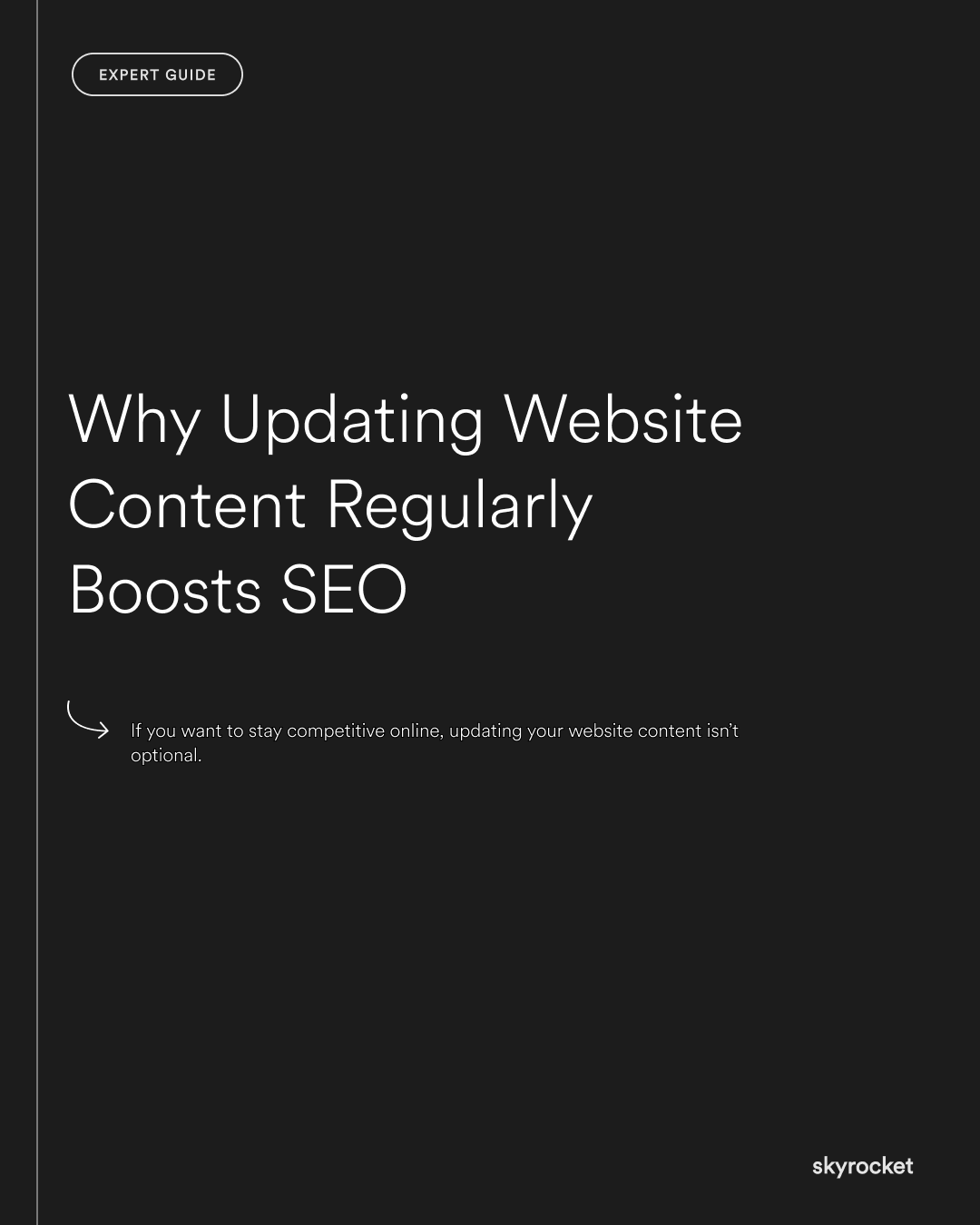You don’t need to be an SEO expert to know that Google rewards useful, up-to-date content. But too many business websites sit untouched for years. Blog posts gather dust. Service pages show outdated pricing or capabilities. Case studies are from three years ago.
That sends the wrong message to both Google and your potential customers.
Search engines want to serve content that’s fresh, relevant, and trustworthy. If your site looks neglected, your rankings drop. And if your content doesn’t reflect how your business operates today, you’re losing credibility, leads, and revenue.
Why this matters to your business
Updating your website content isn’t about chasing Google’s algorithm. It’s about showing up when and where your customers are searching.
- Higher rankings mean more visibility. If you’re buried on page two, you’re invisible to most searchers.
- Relevant content builds trust. Updated info signals that you know your stuff and care about staying current.
- Better content converts more visitors. When your site speaks clearly to what people want right now, they’re more likely to act.
- You get more from your existing content. Regular updates keep performing pages working harder for longer.
In short: if you want to stay competitive online, updating your website content isn’t optional. It’s maintenance, like oiling the machine.
Key Tip: Your best SEO move this quarter might be editing a blog post from two years ago. You don’t always need to create more. You need to make what you already have better. That’s often faster, cheaper, and more effective.
What to review and refresh (and how to do it well)
Here’s how to keep your content fresh without spending weeks rewriting everything.
1. Start with your highest-value pages
Focus on the pages that matter most to your business goals. Usually that means:
- Homepage
- Key service or product pages
- Your most visited blog posts
- Pages that rank well but could rank better
How to spot them:
- Use Google Analytics or Search Console to see which pages get traffic
- Check what ranks for your key search terms
What to check for:
- Outdated information (products, prices, team members, services)
- Broken links or missing images
- Weak calls to action or unclear next steps
2. Update blog posts to stay current (and climb rankings)
Old blog content can quietly lose search traffic over time. But with a few smart updates, you can bring those posts back to life.
What to do:
- Refresh stats, links, and references
- Improve the structure with better headings and subheadings
- Add internal links to newer content
- Expand thin sections or clarify vague points
Example: If you wrote a post in 2022 about "Shopify speed tips," revisit it with insights from 2024. Google sees that as a signal that the content is being maintained, not abandoned.
3. Fix underperforming pages instead of deleting them
Not every piece of content will be a hit. But that doesn’t mean it’s useless. Some pages just need a nudge.
How to identify them:
- Look for pages with high impressions but low clicks in Search Console
- Or pages with traffic but no conversions
What to try:
- Rework the headline to be clearer or more compelling
- Rewrite intros to match search intent
- Add a stronger CTA
Tip: Think like your customer. Ask: if I landed here cold, would I immediately understand the value?
4. Align your content with real search intent
Google is getting better at matching results with what people actually want. If your content doesn’t match intent, it won’t rank — even if it’s technically good.
What this means:
- If someone searches “Webflow vs Shopify”, they probably want a comparison, not a sales pitch
- If they search “best NZ Shopify agencies”, they want real expertise, not generic fluff
Fix it by:
- Reading the top results for your target search term
- Updating your content to fill gaps or offer a clearer answer
- Removing anything that feels like filler or self-promotion
5. Keep your site structure healthy
As you add and update content, make sure your site stays easy to navigate and search-friendly.
Checklist:
- Use clear, consistent headings (H1, H2, etc.)
- Update internal links to reflect your best or newest content
- Remove outdated pages or consolidate similar ones
- Submit updated sitemaps if you’ve made big changes
6. Add new content strategically
Yes, sometimes you do need to create something new — but only when it adds real value or targets a gap.
Good reasons to publish a new page:
- You have a new service, offer, or use case
- You want to rank for a new high-intent keyword
- You’ve got customer questions you haven’t answered yet
Avoid:
- Publishing thin content just to look “active”
- Overlapping with existing pages (which can confuse Google)
Common misconceptions
“We already did SEO when we launched.”
SEO isn’t a one-and-done task. It’s a channel that needs ongoing attention, like social or email.
“We don’t have time to keep blogging.”
Fair. But updating one strong piece a month is better than pumping out weak content weekly. Focus on quality over quantity.
“Our industry doesn’t change much.”
Even if your services stay steady, customer behaviour, search trends, and competitors shift. Staying current shows leadership.
“Isn’t this just for Google?”
Nope. It’s for your customers too. Fresh content builds trust. It shows you’re active, relevant, and care about your message.
What to do now
Here’s a clear, doable list to start improving your content today:
- Audit your top pages. Use Search Console or Analytics to see what’s performing, then check those pages for freshness.
- Pick one old blog post to refresh. Start with one that still gets traffic or ranks for a valuable keyword.
- Update your service or product pages. Make sure your offering, pricing, and contact info are up to date.
- Rework one page that underperforms. Try a new title or intro to match real search intent.
- Set a review reminder. Add a quarterly content check to your calendar so it becomes routine.
Want a second set of eyes?
If you’d like help figuring out where to start or what to update first, feel free to get in touch. We’re happy to review your site and suggest practical improvements. No pressure, just good advice.



